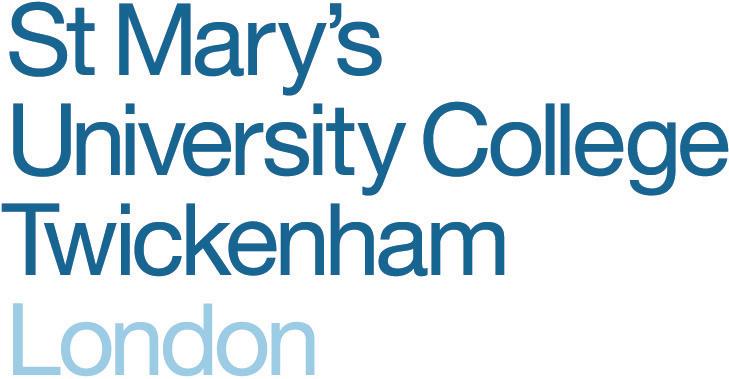

Debating Theologies of Liberation and the Challenge of Ecofeminist Spirituality : Comments on To Rwanda and Back: Liberation, Spirituality and Reconciliation by Mary Grey
Bibliographic citation:
Manning, Vincent and Grey, Mary (2008), Debating Theologies of Liberation and the Challenge of Ecofeminist Spirituality : Comments on To Rwanda and Back: Liberation, Spirituality and Reconciliation by Mary Grey, Holy Land Studies, 7(1), 95-98.
Version: Publisher’s Version
Official link: http://dx.doi.org/10.3366/E1474947508000085
Copyright and Moral Rights for the articles on this site are retained by the individual authors and/or other copyright owners. For more information on OpenResearch Archive’s data policy on reuse of materials please consult http:// research.smuc.ac.uk/policies.html http://research.smuc.ac.uk/
March31,2008Time:05:56pm008.tex
[HLS 7.1(2008)95–102]
DOI:10.3366/E1474947508000085
DEBATING THEOLOGIESOF LIBERATIONANDTHE CHALLENGEOF ECOFEMINIST SPIRITUALITY
VincentManningandMaryGrey
COMMENTSON TO RWANDAAND BACK: LIBERATION, SPIRITUALITYAND RECONCILIATION byMaryGrey (London:Darton,Longman&Todd,2007).Pp.160.Paperback.
ISBN0232526648
VincentManning
SchoolofTheology,PhilosophyandHistory StMary’sUniversityCollege StrawberryHill TwickenhamTW14SX vincentm@talktalk.net
MyfirstvisittoAfricain1997wasmarkedbysurprise,disturbanceand delight.Notpreparedforthe‘cultureshock’,Idescribeditasbeinglike ‘visitinganotherplanet’atthetime–theAfricanlandscape;thebeautiful skies;thepeopleIwasprivilegedtoencounter.Soitseemstohavebeen forProfessorMaryGreywhenshehadherfirstexperienceofAfrica, visitingRwandainDecember2004,whichshereflectsuponextensively inherbook ToRwandaandBack.IwasvisitingfriendsinArua,northern Uganda.GreywasinRwandaattheinvitationoftheWorldCouncil ofChurches.1 NorthernUgandawasafflictedbypoverty,tribaldivisions andtheterrorsofthe‘Lord’sResistanceArmy’(LRA)2 andstillborethe scarsoftheIdiAminregime.MaryGrey,aleadingecofeministliberation
1WorldCouncilofChurches:FaithandOrderCommission,aspartofadelegationof theologians,church-basedleadersandhumanrightsactivists.
2TheLRAwaswaginga‘war’inNorthernUganda.Roadsweredangerousdueto landmines,andarmedescortswereadvisedfortravellers.Busservicesforlocalpeople wouldnormallygoinconvoytolessenthepossibilityofambush.Childrenweresubject tokidnapandtoforcedrecruitmentaschildsoldiers.Theweekofmyarrival,abomb explodedinalocalbar,knowntobefrequentedbythe‘Musungi’–whitepeople,mostof whomwereattachedtoNGO’sintheregion.
96
HolyLandStudies
theologiancurrentlybasedatStMary’sUniversityCollege,wasentering intoanotherAfricantrauma,thatoftheaftermathoftheRwandan Genocide,whenanestimated800,000peoplewerebrutallymurderedin just100daysin1994.
Grey’ssenseof‘personaldisturbance’comesacrossintheopening pages,andcauseshertoreflectuponherownplaceinrelationtothepeoplewhose‘depthofsuffering[she]wouldneverbeabletofathom’.She recognisesthatsheis‘apartofthetragedy’(p.6)andcannolongerstand asidefromit.Thesedeeply-affectingchallengestofaithandspirituality,as apersonalerttoherownresponsibilities,evencomplicity,willberecognisabletoanypeoplewhohavebeensimilarly‘shockedawake’through encounterswiththelivedsufferingofothersasaresultofinjustices.This thenisGrey’sstartingpoint,foranexplorationofthedemandsofjustice withinaspiritualitythathasreconciliationat‘itscore’(pp.110and168). Thissenseofoverwhelmingsufferingissomethingweshallmentionoften.
Thisbookisapersonal‘thinkingaloud’,adialoguebetweenher spiritualityandthequestionsthatariseforhernow.Sheiswrestlingfor ahopeful-wayforward,aspiritualitythatcanmakeadifference,bringing hopeoutofcollectiveandpersonaltraumas(p.169).
Manyexamplesofsufferingandconflictmakeforuncomfortable reading.Alongsidetheseexamples,fromRwandatoPalestine;thesubjugationofwomenandthecomplicityoftheChurchinthemaintenanceof injustices;globalisationandclimatechange;shedescribespeopleoffaith frommanytraditionsofferingresistancetoinjustice,asactiveagentsfor healingandhopefulness.Theseexamples,though,pointtoadepressing reality:mostoftheexamplesaresometimeinthepastorseemsosmallin consequence.Thepovertyofexamplesreflectsthereality:authenticsigns ofhopearehardtofind.Thereadermayexperience,asIdid,asenseof beingoverwhelmedattimes.
Usingthemesof‘liberationtheologies’,Greyconstructswaysofdrawingonherfaithtraditionthatmightbehelpful.Sheemphasisesthenecessityofpainful‘re-membering’forreconciliationtobepossible(p.17); eachpersonaspreciousinGod’seyes,asapossibleentrytorepentance fortheoppressors(pp.19–20);thenecessitythattruthbetoldifright relationshipsaretoberestored(pp.41–2);there-imaginingofsacrifice, asanempoweredactofradicallovethatenablesvictimstoforgive(p.43); compassionascornerstoneofreconcilingjustice(p.76);andtheneedfora renewedChurch,thatemergesfrombelowratherthanasapowerfulelite, insolidaritywiththepoor,wherewenotonlyriskvulnerabilitybecause oflove,butdiscoverthefullnessoflifeintheprocess(p.95).
Inchapterfive,Greylinksthehumanfaceofsufferingtothesuffering earth.Sherecognisesthatliberationtheologieshavefailedtounderstand theinterdependentqualityofjustice,andhavenotmadesufficientlinks
ManningandGrey DebatingTheologiesofLiberation 97 withourrelationshipwith‘allofcreation’.Shegivesfreshmeaningtothe ‘preferentialoptionforthepoor’,definingnatureitselfasanewcategory ofpoverty.Rightly,Greyidentifiesthepoorestpeoplesasmostexploited whosufferfirst,asaconsequenceofourdestructionoftheearth.She namesthisascomingfromakindofhubrisandhumanarrogance(p.119); requiringarecoveryofconnectionwiththesacredearthasgift,without whichallethicalattemptsflounder(p.138).
Thischapterseemedtoflowmosteasilyfromherpen,andGrey seemscomfortablediscussinghoweverything,includingjustice,is interconnectedina‘weboflife’,wherewehaveresponsibility.She suggeststhatwecandevelopaspiritualityofactionthatwillenableus toresistinjusticeandstillstayhopeful,inthefaceofoverwhelmingodds. ThisalsofeltamillionmilesawayfromRwanda’sgenocide,althoughIam surethatitisnot.
HavingjourneyedthusfarwithMaryGrey,Iwashopefulofsome ‘answers’totheseissues.Whatcanpeopleoffaithdo,andhowcan wegoaboutit?Greyofferstoolsfortheologiansandchurchleaders inthisbook,andinthelastchaptersproposesaspiritualitythat canreawakenthe‘powerofdreamingandimagining’(p.159)where violencegiveswaytosymbolsoflifeandflourishing.Usingexamples ofDorothyDayandDorotheeSoelle,sheexpoundsamysticaltradition thatgroundstheindividualfirmlyinprayerandrelationshipwiththe Spiritwhichsustainshope,butcruciallyimpelsustowardsconcrete actiontocombatinjustice,challengestructuralsin,andengagepolitically forthemarginalised.Thisisaspiritualityofthehereandnow,which engageswiththestruggleforpeaceandjustice,sharestheburdensof suffering,andchallengesthedominantpowerswithahopefulfaith thatnoeffortiswasted.
Greyopensthisbookwithanapologythatmanyquestionsremain unanswered,andconcludeswiththerecognitionthatoftenthingsseemto beasbadasever(pp.168–9and193).Sheprovidesnonewsolutionshere, noreasyanswers,butfoodforthoughtandsometheologicalinsightsthat manyengagedinthestruggleforjusticeandpeacefromafaithperspective willfindhelpful.ThroughoutsheremindsreadersintheWestthatwe bearaburdenofresponsibilitythatrequiresrepentance,individuallycalls usto‘livesimply’,andasthechurchesrequiregreateraccountabilityto safeguardagainstcomplicityinoppression(p.176).
Insomeways,thetitleofthebookisnotentirelyinlinewithits content.Thisisnotaboutaliberationspiritualitywithreconciliationatits heartfromaRwandan(orevenanAfrican)perspective.Howcanitbe? Thisalsomademeuncomfortable,becauseIdetectedacertainvoyeuristic dimensioninMaryGrey’swritingthatIfeltmostacutelywhenshe includesdescriptionsofherhomesituation(pp.106and141).Thepicture
98
HolyLandStudies
inmymindofatheologiansittingbyababblingbrookcontemplating themeaningofthepainfulexperienceofothers3 blockedinpartmy ownreceptionofthegemsthatarecontainedinthesepages.Thesegems includetheneedforaspiritualitythatembracesdiversity,andisinclusive even,ofthe‘hostileother’(p.159);herchallengetovulnerability,andthe practiceofdailyforgiveness(pp.180and191);thecompellingnotionof seeingthewoundedfaceofGodincreation(p.130)andhercallforan eco-spirituality;therecognitionthatitiswe,thepowerful,whoarecalled toongoingrepentance,andthevictimsofinjusticewhoarechallengedto findtheresourcestoforgive.
Perhapsinreadingoneperson’saccountofanhoneststruggle,the discomfortresidesfirstwithinmyself.Itoositinmycomfortablehome tryingtomakesenseofthesufferingofothers.Itoowonderwhatcan Ido?MaryGreymakesapositivecontributiontoapainfuldiscussion fromafaithperspectivewhichchallengesthereader.Sheleavesuswiththe advicetobeginwiththesmalltasksthatarepossible(p.165),andreminds usoftheneedforsustainingprayerleadingtoaction.Sheconcludesthat ourchoiceislimited;wemustchooselifeordeath.Wecanacquiesceto thedominantcultureofviolence,‘orkeepalivethetorchofthepolitical andmysticalspiritualityofresistance.Thereisno‘ThirdWay’(p.192).
Inthefinalanalysisthisworkreflectsamoregeneraltrend withinliberation-basedtheologies,towardsdiscussionofspiritualityand ecclesiology,moretraditionalthemes,thanattemptsatanysocio-political critiques,ahallmarkofthefirstLiberationTheologyofLatinAmerica. Furthermore,thisbookpainfullyexposesthelackofaunifiedresponse4 tothedominantoppressiveandexploitativeforcesinourworldtoday.I amleftwithasenseofpowerlessnessandthequestion,whathopethen forliberation?5
3Thisseemstometobeatvariancewithliberationtheologytraditionsasarisingoutof theexperienceoftheoppressedgroup.MaryGreydrawsupontheexperiencesofRwandanpeople,andusesexampleswelltomaketheologicalpoints.Nevertheless,itremainsthe casethatsheisdrawinguponthereportedexperienceofothers.Shecanonlycomment upontheRwandanexperience.ButperhapsthisistooharshgivenMaryGrey’shonesty intalkingaboutherownjourney,andsearchformeaning.Bycontrastherreflectionupon thesituationinIndiadidnotbotherme,becauseshetellsofheractiveinvolvementthere. Perhapsifthebook’stitledidnotclaimRwandaascentral,Iwouldbelesstroubled.
4InLatinAmericanLiberationTheology,thisconcreteresponsewastermedthe ‘historicalproject’.Atthetime,itincludedgenerallyspeakingarejectionofthecapitalist systeminfavourofasocialistbasednationstate.Sincetheendofthecoldwarand thedominanceofthecapitalistsystemglobally,LiberationTheologianshavestruggled todescribeanewlyrealisablehistoricalproject,orliberatingpraxis.
5AmongstthedominantforcesIamthinkingparticularlyof‘globalisation’,multinationalbusinessandtheireffects;greaterdivisionbetweenpeoplesandnations,and continuingpovertyglobally.
R
ESPONSE:C
HALLENGEOFECOLOGICALAND ECOFEMINIST SPIRITUALITY
ProfessorMaryGrey
SchoolofTheology,PhilosophyandHistory
StMary’sUniversityCollege StrawberryHill TwickenhamTW14SX m.grey@surfwise.co.uk
IamgratefultoVincentManningforhissensitive,thoughtfulcomments andforthisopportunitytodevelopanexchangewithafocusonthe contributionofEcofeministTheologiesofLiberationtothedebate aroundthefutureofLiberationTheology.AsIwrite,violencecontinues toescalatefollowingtheKenyanelectionsandsimilaritiesarebeing noticedtotheRwandangenocideof1994.YetIthinkthatwhereasthere aresomelinks,thereisahugedifferencefromacarefulandlongplanned genocideinRwandaandKenyantribaltensionsexacerbatedbyanunjust electionandtheexperienceofpoverty,injusticeanddispossessioninmany ofthetownships.Wedonoservicetothejusticestrugglebynotinsisting ontheuniquenessofeachsituation.
Thereviewersharesmyconcernastotheclaimsmadebysituations ofoppressionandinjustice.Whatresponsibilityshouldapersonbear, catapultedalmostbyaccident–asIwas–intotheRwandansituation?Yes, thereappearstobeanoverloadofsufferinginthebook,thoughIcould notunderstandhisremarkthat‘mostoftheexamplesaresometimein thepast’.Rwanda’ssufferingsfesteron.Palestine’sanguishworsenseach day.MyTajikistanstoryisadmittedlyinthepast,butistoldtoshowthe indirectapproachtopeace-makingwhichherehadmadeallthedifference. Thesensethattheapproachtosufferingis‘voyeuristic’raisesthesame questionastohowtorelatetoasufferingpeoplefromadistance.Thefact thatImeditatebyarivereachmorning–referredtosomewhatsarcastically asa‘babblingbrook’–isneitherherenorthere.WhenI’minaRajasthani FieldCentrethiswouldtakeplaceinfreezingcold,infarfromcomfortable circumstances.Doesthatmakereflectionmoreauthentic?InRwandaI soughtbeautyandwasdazzledbyit,evenamidstthehorror.Ecofeminist thoughtinvitesthereflectivepersontosituatehimself/herselfinrelation tonature–whateverthecontext,beitdegradedorflourishing.
Thechallengestillremains:whatshouldbetheresponsetooppression andsuffering?Asthereviewerisaware,Ihaveworkedfor20yearsin RajasthanandIndianLiberationtheologyhashadahugeimpactonmy
100
HolyLandStudies
work.6 ButoneofthecoreprinciplesofLiberationTheologyfromits inceptionhasbeentheempowermentofthepeoplethemselvestospeak withtheirownvoices,todeveloptheirownagency.So,asanon-Indian, andgivenBritain’scolonialhistoryinIndia,therelationshipmustbeone ofpartnershipandenablement.Trustcannotbepresumed.Atthismoment itisjustasimportanttoworkhereinBritainonadvocacyaroundtheissue oftheDalits(formerUntouchables),asitistoworkinIndia.7 Situations moveon.Therevieweraccuratelytouchesonmyowndiscomfortwith armchair,academictheologyandmyperennialtemptationtoleaveit–growingstrongerovertheyears–asacademiatriesincreasinglytoignore andmarginaliseLiberationTheology.
WhatwascleartomeinRwandawastheneed,asafirstworldperson, tovisit,tohearandtellthestories.‘Yourcomingispartofourhealing,’ waswhatwassaidtous.Maybethiswasexaggerated.Yet,asIrelatedinthe book,partofthewoundednessofRwandaisstillthefactthattheworld turnedaway–andhasnotreallymademuchreparationforthisfact.This IlearntfromtheDirectorofSURF(theRwandanfundforsurvivors) withwhomI’mnowtryingtowork,todiscoverexactlywhatVincent Manningqueried–whatresponsetothissufferingcanandoughttobe made?Whatkindofsolidarityisappropriate,ongoingandeffective?
Thisdrawsmetotheheartoftheargument,that‘thebookisnot entirelyinlinewithitscontent.’Thebookwasnotmeanttobejustabout Rwanda.8 Itwasmeanttoreflectonreconciliationseenasaspirituality. Thismeansreconciliationconsideredasawaytolive:ofcoursethere arenoclear–cutanswers–iftherewere,wecouldimmediatelysolvethe Palestiniansituation,thePakistanandKenyanviolence,andsoon.
ItwasbecauseofsomeofthelimitationsofLiberationTheologythat Itookthisapproach.BearinmindthatJohn-PaulLederach(seethe peace-storyofTajikistanrelatedearlier),himselfaseasonedMennonite peacecampaigner,sought‘crooked’,roundaboutwaystopeace,even citingmusic,artandpoetry.Isawthatthestruggleforjusticeinthe teethofoppressionapproach,thoughessential,couldnotcopewiththe complexityofcertainsituations,likethefailureofsomanyliberation movements.Praxis,thecoreconceptofliberationmovements,hasits limits.Foralongtimeblindtogenderandsexualityissues,Liberation Theologyhasonlybeguntofactorinecologicaldimensionssincethe RioSummitof1992.TheBrazilianliberationtheologian,LeonardBoff, publishedhisbook, EcologyandLiberation:ANewParadigm asrecentlyas
6Seemybook, SacredLonging:EcofeministTheologyandGlobalisation (London:The SCMPress,2003).
7Seewww.dsn.org.IamaTrusteeoftheDalitSolidarityNetwork,UK.
8Thepublisherwasveryclear:‘Idon’tjustwantanotherbookonRwanda’.Yet reviewershavetreateditassuch.
ManningandGrey DebatingTheologiesofLiberation 101 1995(Orbis).Eventhisbreakthroughlackedthefull-blownapproachof ecofeminism,thatlinksoppressionofwomenwiththeearth.Natureisthe newcategoryofpoverty,wroteSallieMcFague.Sincemyearlierbookin 1989, RedeemingtheDream:Feminism,RedemptionandLiberation (SPCK),I havebeentryingtomapthesewiderlinks.Ihaveworkedwithgroupswho refusetodespairamidstthemostdesperateofcircumstancesandwanted toexplore‘ingredients’ofsuchaspiritualitythatwouldberelevantfor morethanonecontext.Hencetheseaspects–mentionedbythereviewerofremembering,caring,revisioningsacrifice,recoveringbeautyandso on.Theyarenotmeanttotaketheplaceofhard-hittingpoliticaland economicarguments,butthey are meanttoprovidemotivationtoget upinthemorningandfacethedailystruggle.WhyisitthatRajasthani womendopreciselythat,facethedailysearchforwaterandfodder, maintaincareforhusbandandchildren,whereasinsituationofdrought andfailureofagriculture,manymenareaddictedtoalcoholandopium, andthesuiciderateofsmallfarmerssoars?Stayingclosetothenourishing sourcesoflifeseemstoprovidestrength.(Itisnotananswertoinjustice, ofcourse–norshoulditberomanticised).InthebookIrelatedhow WangariMathai,(KenyanNobelPeaceprizewinner),facedwiththelack ofdemocracyinKenya,andwomen’slackofparticipationinitsprocesses (tragicallyrelevantatthemoment),taughtthemtoplanttreesandthrough this,notonlycreatedhugeecologicalfruitfulness,butenabledthemto becomeagentsforchange.
Andthisispreciselythefocusofecologicalandecofeministspirituality. AsImentioned,issuesofland,waterandagricultureareoftenatthe heartofaconflict,yetfrequentlynotrecognisedassuch.WiththeIraq war,SaddamHusseinandhisregimeweretheostensiblepretext,oil wastheunderlyingreason–raisingquestionsofwesterndependency–andecologicalruinhasbeentheresult,(alongwithpersistentviolence). Ecofeministspiritualityplaceshumanitywithintheentireweboflife.It makesclearthelogicofdominationthathasbeenattheheartofwestern spiritualitysinceAristotle,aspointedoutbyValPlumwood.9 Aristotle (PoliticsCh.21)sawthedominationofmaleoverfemale,humanover animalandfreeoverslave,asenshrinedinnature.EcofeministPhilosophy andTheologyattempttorediscoverinwesternthoughtapre-patriarchal strand,thatisbothbiophilicandegalitarian.Thisisahotly-contested area.10 Itinvokesearlygoddesscultures–inEgypt,Greece,Canaan,India andAfrica–arguingthatlinksbetweenwomenandnaturewerehonoured informercultures.Theproblemisthelackofclarityastoevidence–archaeologicalortextual.Whetherthehistoricalargumentsareableto
9ValPlumwood, EcofeminismandtheMasteryofNature (London:Routledge,1993).
10SeethemanyworksofCarolChrist,forexample, theReturnoftheGoddess (Reading: AddisonWesleyPublishing,1997).
102
HolyLandStudies
provethecaseornot,whatisclearisthatcontemporaryecofeminist analysisexplorespost-patriarchal,transformativeapproachestoethics, epistemologyandliberation.
RelevantformyexplorationofreconciliationspiritualityisGrace Jantzen’sproposaltoreplacepatriarchy’sfocusonmortality(andrelated symbols)withHannahArendt’ssuggestionof natality (birth-giving)as focusofanewsymbolsystem(pp.153–5).Thesignificanceisthat apatriarchalsymbolismofmortalityfocusesonsalvation/redemption, onbeingsaved from thehumanconditionandearthlyties,fora moretranscendentalspiritualdestiny.Natality’s focusisembodiment, creativity,attentiontobeautyandearthlyflourishing.Deathisseennotas punishmentbutaspartoflife’sprocesses.Divinepowerisre-imagedasan immanentrelationaldynamism,evokingthesharedwell-beingofpeople andearth–asillustratedbythebiblicalpropheticvisionofshalom.WhatI observedinRwanda–andotherpost-genocidesituations–wastheneed, giventheleveloftraumathatpeoplewereundergoing,notsomuchfor thelanguageofjusticeandliberation(thiswentwithoutsaying).Nortobe toldtoforgiveandforget.Butresources‘tobringbackthebeautyoflife’ (seeChapter6),tokindlethewilltolive,tohope,tobelieveinafuture. Thiscannevermeanforgettingthegenocide.TheDirectorofSURF hastoldmeshehasbuiltaCentreinRwanda11 wherealltestimonies ofthekillings–stillarriving–willnotonlybepreserved,butcontinually retold,butinacontextwhereyoungpeoplearegivensomethingto hopefor.Ecofeministspiritualityisaboutthinkingbeyondthepresent: itisthinkingaboutthehealthoftheplanetinter-generationally.Some–liketheIroqoisIndians–wouldsay,encouragingthinkingtotheseventh generation.‘Tostrugglewithareconcilingheart’12 wasawaytocombine fightingoppression,whereverencounteredglobally,withtheneedto focusonpossibilitiesforflourishing,forcreatingpossibilitiesforjoyand celebration,howevermodest,sothatdespairoflifeonearthwillnever prevail.Hencereconciliationasthegoal–butalsothewaytothegoal.
11FundedbyStephenSpielberg.
12Myoriginaltitleforthebook–tomakeitclearthatthefocusgoesbeyondRwanda.
